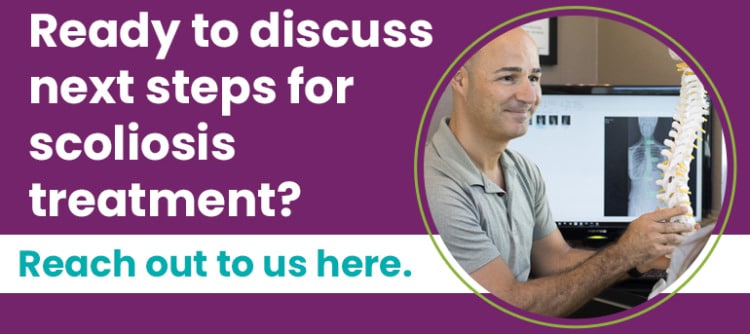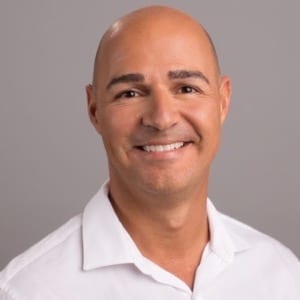Scoliosis an Emotional Journey: Coping and Support
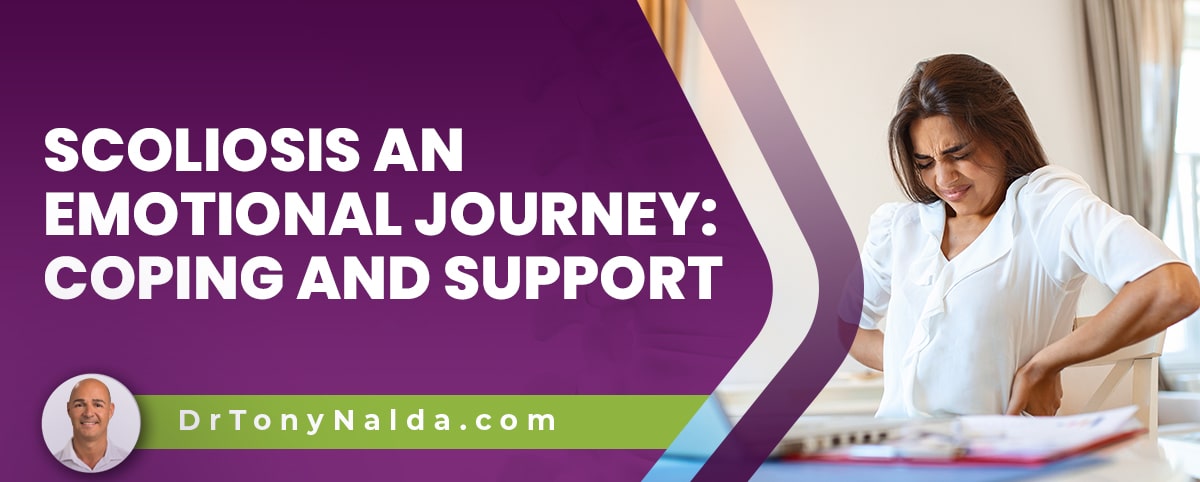
Scoliosis causes the spine to bend and twist unnaturally and affects the body in a number of ways: posture, movement, and sensation. A scoliotic spine is unbalanced and unstable and can disrupt the body's overall symmetry.
Being diagnosed with scoliosis can be an emotional journey. From processing the news that a progressive condition has developed to the challenges of the treatment journey, scoliosis patients need support and understanding, particularly young patients dealing with adolescent idiopathic scoliosis.
Being diagnosed with a progressive condition can be overwhelming, and as adolescents are the age group most commonly affected, let's focus on the challenges adolescents face.
Table of Contents
Adolescent Idiopathic Scoliosis
When scoliosis is first diagnosed, conditions are classified based on key variables, one of which is condition type, and this is determined by causation.
Most cases of scoliosis are idiopathic, meaning no known cause, and this accounts for approximately 80 percent of known diagnosed cases, and the remaining 20 percent are considered atypical and are associated with known causes: neuromuscular scoliosis, congenital scoliosis, and degenerative scoliosis.
The most prevalent type overall is adolescent idiopathic scoliosis diagnosed between the ages of 10 and reaching skeletal maturity, and this age group is the most at risk for rapid-phase progression because progression is triggered by growth.
As a progressive condition, the nature of scoliosis is to get worse, and this is a characteristic of scoliosis that makes a diagnosis particularly difficult to process. The knowledge that a condition will never go away and is likely to get worse over time is fraught with emotional challenges.
Not only are adolescents the most commonly diagnosed with scoliosis, they are also the most at risk for rapid progression, and they are also the age group most commonly associated with body image concerns, anxiety, low self esteem, and depression.
The Adolescent Mindset
Patients have their own unique responses to a diagnosis, but in general, the adolescent mindset is about fitting in; most teens don't want to stand apart from their peers.
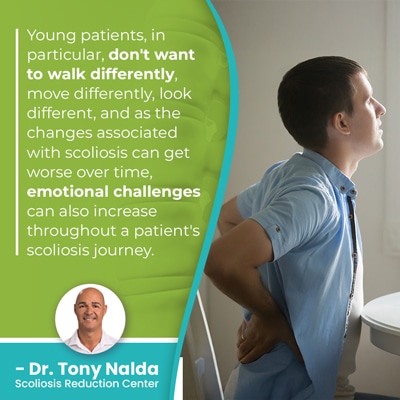 Young patients, in particular, don't want to walk differently, move differently, look different, and as the changes associated with scoliosis can get worse over time, emotional challenges can also increase throughout a patient's scoliosis journey.
Young patients, in particular, don't want to walk differently, move differently, look different, and as the changes associated with scoliosis can get worse over time, emotional challenges can also increase throughout a patient's scoliosis journey.
Difficult emotions are difficult emotions at any age, but considering the volatility of the stage of puberty with its rapid and unpredictable growth spurts and hormonal shifts, this age group is particularly vulnerable to mental health issues.
A challenge to the early detection of adolescent scoliosis is the adolescent tendency to hide things, to not be transparent and share bodily changes with parents and/or caregivers; in fact, in many cases, the reason parents don't notice their child's scoliosis earlier is because active efforts to conceal the changes are being made.
Body compensations can conceal a lot, and when paired with the classic adolescent slouch and tendency towards baggy concealing clothing, scoliosis isn't always easy to diagnose, and there are a number of benefits associated with early diagnosis and intervention.
So let's break down the effects of scoliosis and the emotional challenges they can cause.
Postural Changes
The main symptoms of scoliosis in children involve postural changes as the condition's uneven forces disrupt the body's overall symmetry.
In many cases of childhood scoliosis, the earliest signs of scoliosis include uneven shoulders and uneven hips.
Additional postural changes can include uneven shoulder blades, the development of a rib cage arch, arms and legs hanging differently, and these types of changes can cause clothing to become ill-fitting.
Postural changes can be subtle when the condition is mild, but if it progresses to become moderate, severe, or very severe scoliosis, the way it changes the body's appearance and overall symmetry can be overt and difficult to conceal.
Postural changes can be confusing prior to a diagnosis, and hearing the news that these changes can get worse once a diagnosis is reached can be devastating news to a teenager.
Maintaining open communication with teens recently diagnosed is key, and it can be tempting to be overly optimistic with children, but the reality is that the condition needs to be taken seriously and addressed proactively, and when it is, scoliosis can be highly treatable.
So when talking to adolescents, being realistic about the condition is important, while also being hopeful about the power of treatment.
In addition to postural changes, physical challenges can also present themselves.
Changes to Movement
As scoliosis progresses, changes to movement are also common.
The condition's uneven forces can disrupt a person's gait, balance, and coordination, and for adolescents who define themselves through sports and certain activities, related activity restrictions can call their identity into question.
Not all cases of scoliosis will cause activity restrictions, but in general, sports that involve repeated shock from impact (collision sports), overuse one side of the body, or place the spine in unnatural positions needs to be approached with caution or avoided entirely.
So if you imagine a young person who defines themselves by being the school's football star or competes regularly in dance competitions that need to stop, these patients have some difficult emotional terrain to navigate.
For teens with activity restrictions, finding alternate activities that are deemed safe by their treatment provider can be a positive distraction and help patients stay active and preserve mental health.
Teens whose personal journey with scoliosis includes having to leave behind much-loved sports and activities need support to maintain their well being and mental health.
Support groups can help. Talking with other adolescents facing the same challenges can be invaluable and help teach coping strategies and provide valuable support.
The psychological effects of scoliosis can't be discounted, and this happens as the focus is often on improving the condition's physical symptoms and challenges.
An initial diagnosis can require time to process, and when talking to young athletes, is the fact that managing scoliosis doesn't have to mean giving up on ambitions and goals is helpful information; in fact, there are a number of professional athletes and celebrities that have gone on to thrive in life, despite a childhood scoliosis diagnosis.
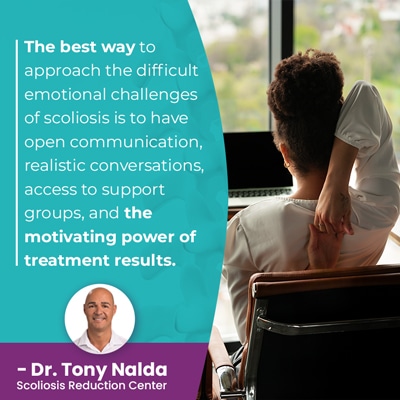 The best way to approach the difficult emotional challenges of scoliosis is to have open communication, realistic conversations, access to support groups, and the motivating power of treatment results.
The best way to approach the difficult emotional challenges of scoliosis is to have open communication, realistic conversations, access to support groups, and the motivating power of treatment results.
Treating Scoliosis Can Minimize Emotional Challenges
In many instances of patients being diagnosed with challenging medical conditions, it's the feelings of a loss of control and powerlessness that can be the hardest to deal with.
While there are never treatment guarantees, the best way to minimize the effects of scoliosis, physical and emotional, is to address their underlying cause: the scoliosis itself.
Treating scoliosis can mean positive results which can be very motivating for young people, and the reality is that many cases of scoliosis are highly treatable and responsive to non-surgical treatment.
Non-surgical treatment is the best way to restore the body's natural and healthy posture and is also the best for overall spinal health and function.
An unnaturally curved spine that's corrected on a structural level through chiropractic care and manual adjustments is one that will maintain as much of its flexibility as possible: a factor that's very important to young athletes.
Treating scoliosis with surgery is an option, but this means a spine that's going to be weaker, more vulnerable to injury, more painful in many cases, and also less flexible.
Good posture is important for spinal health, and conservative treatment focuses on improving postural changes through addressing the misalignment of the spine: targeting the root cause of postural symptoms.
Conclusion
The psychological effects of scoliosis need to be a focus of treatment for those in need, and as conservative treatment focuses on the whole patient, support and guidance on resources available is part of the treatment journey.
While traditional treatment focuses on how the condition affects the spine, conservative treatment looks at all the condition's effects and works towards improving and/or reversing them as much as possible.
Conservative treatment options include chiropractic care, physical therapy, corrective bracing, and rehabilitation for long-term sustainable treatment results.
As scoliosis is known to affect appearance, movement, and sensation (more common in adult scoliosis due to nerve compression), a doctor who specializes in scoliosis will understand that physical challenges are often accompanied by emotional challenges.
Having family support can be invaluable for children dealing with the challenges of a diagnosis, treatment, and living with scoliosis.
Here at the Scoliosis Reduction Center®, I want my patients to be happy with their treatment and with themselves, and based on my experience, the best way to safeguard the mental health of children and teens recently diagnosed is to be open and honest about upcoming challenges, while being positive about the power of corrective treatment results.
Dr. Tony Nalda
DOCTOR OF CHIROPRACTIC
After receiving an undergraduate degree in psychology and his Doctorate of Chiropractic from Life University, Dr. Nalda settled in Celebration, Florida and proceeded to build one of Central Florida’s most successful chiropractic clinics.
His experience with patients suffering from scoliosis, and the confusion and frustration they faced, led him to seek a specialty in scoliosis care. In 2006 he completed his Intensive Care Certification from CLEAR Institute, a leading scoliosis educational and certification center.
About Dr. Tony Nalda
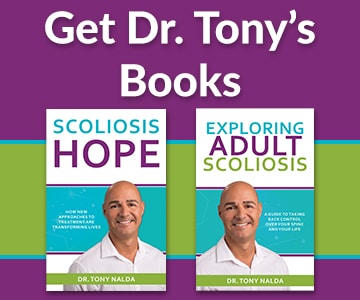 Ready to explore scoliosis treatment? Contact Us Now
Ready to explore scoliosis treatment? Contact Us Now